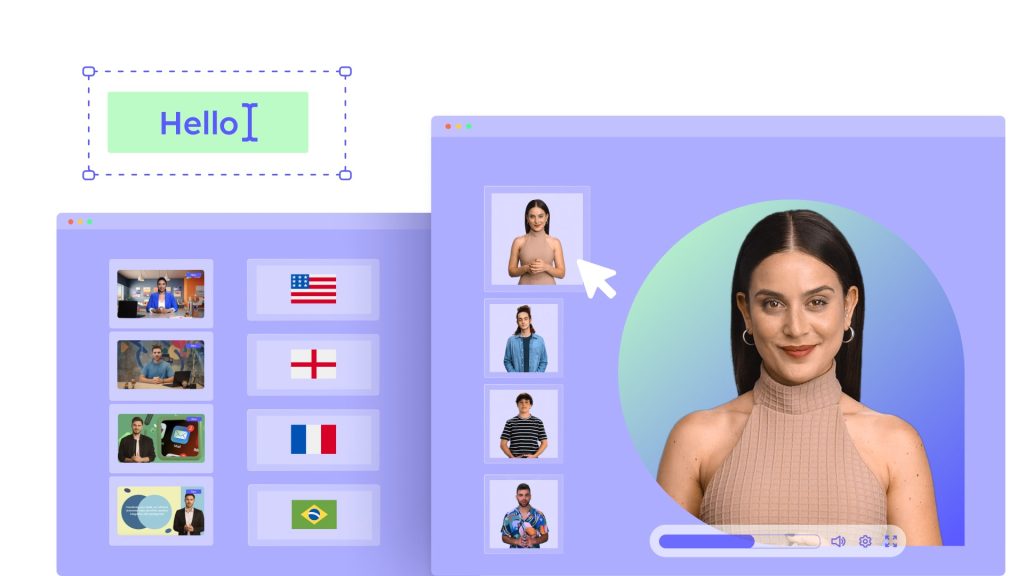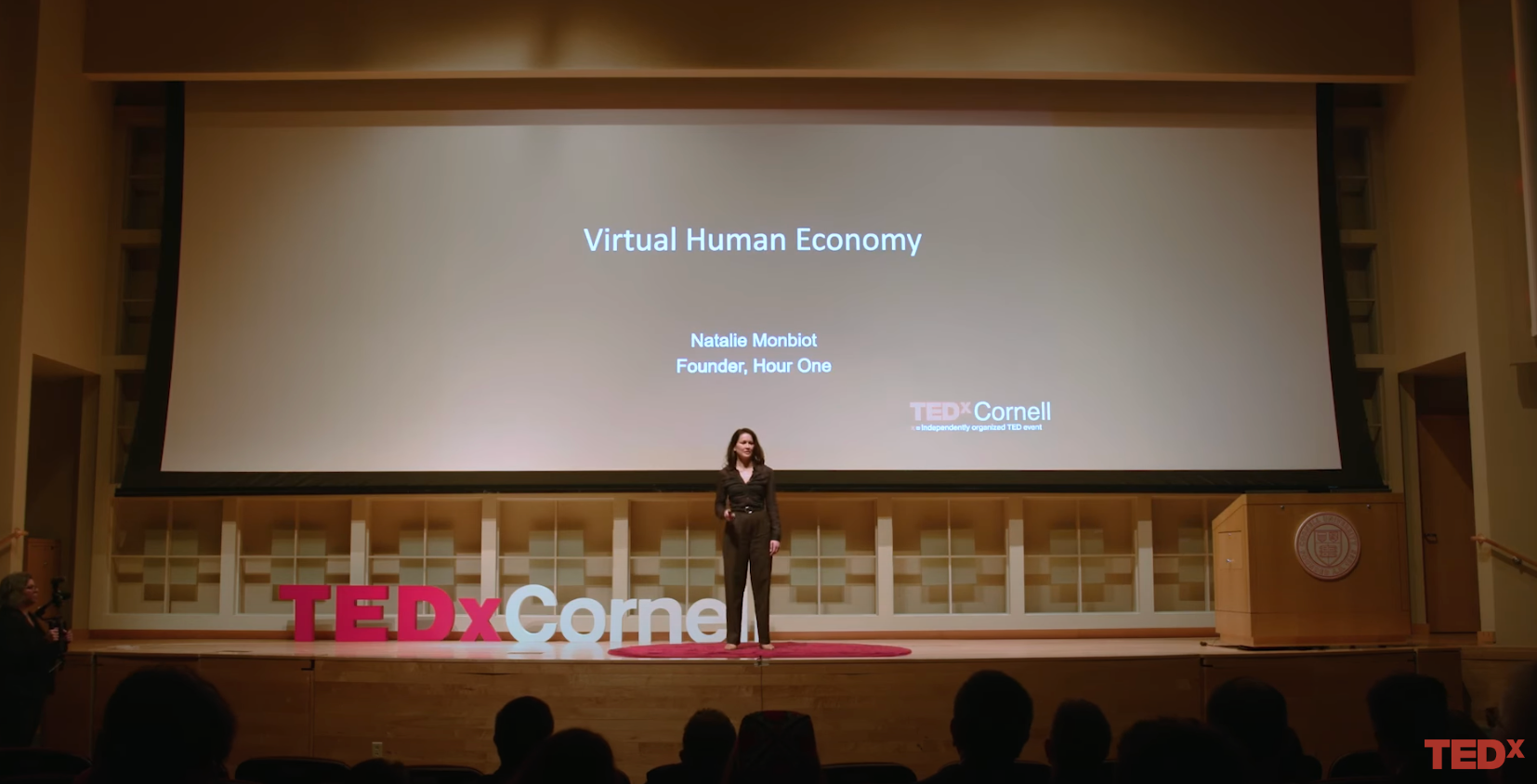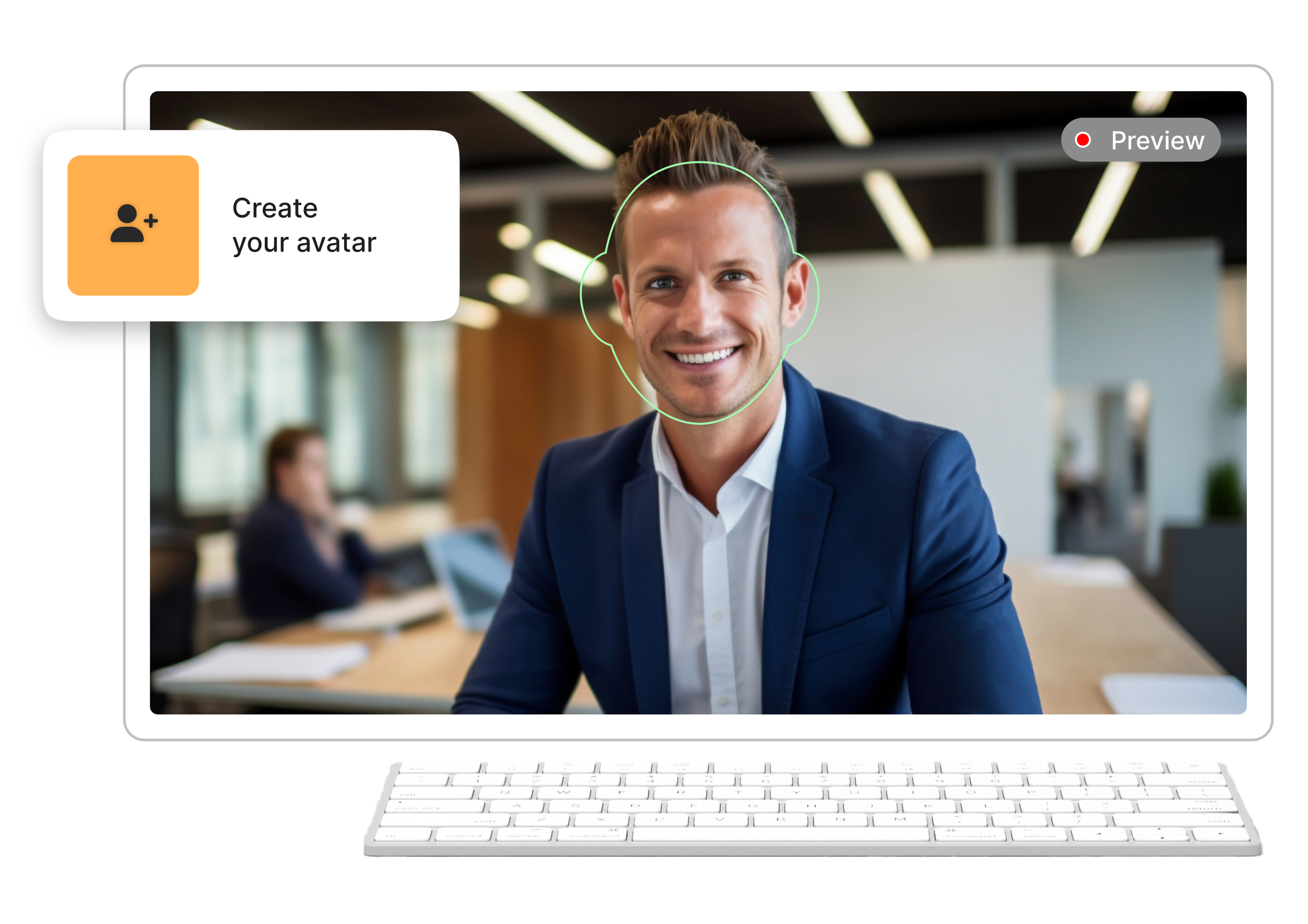AI videos are a powerful tool that can help engage students by helping them learn in the style they’re most comfortable with. When educators work with several students at once, it can be challenging to make materials engaging for each student, especially on e-learning platforms, which is where AI videos can help in creating individualized learning experiences based on learning styles.
In this article, we’ll take a more detailed look at how e-learning students with different learning styles can benefit from AI videos.
Learning Styles and the Use of Videos
There are many different types of learning styles, however, many experts agree that there are four predominant types of learners:
- Visual learners respond best to information they can see, such as maps, charts, diagrams, and videos
- Auditory learners learn best through listening and respond well to verbal instruction, audio recordings, and lectures
- Kinesthetic learners prefer physical interaction while learning and absorb information best through hands-on activities, experiments, and practice
- With the read/write learning style, students learn best by taking notes, following written instructions, and studying written material
In addition to these styles, there are other ways students might prefer to learn. Some students are social learners and thrive doing work with their peers, while others are solitary learners and do better studying on their own. Some students even prefer gamification learning such as using quizzes or games to learn.
Given all the different learning styles, resources such as AI-generated videos can greatly help educators focus on providing individualized learning experiences. With video lessons in education, students benefit from visualizing material or even turning learning into an interactive game. Instructional videos for students encompass all the most efficient learning styles!
Most educators agree that mixing different learning styles is the best way for students to learn. According to research presented by education experts John Hattie and Gregory Yates, students are both visual and auditory learners. In their book, Visible Learning and the Science of How We Learn, Hattie and Yates use studies to show that we learn better when “the inputs we experience are multi-modal or conveyed through different media.”
AI is the future!
AI-generated videos combine multiple styles together such as visual learning, auditory learning, and even gamification, all of which help engage students as much as possible.
Benefits of Visual Learning
Visual learning tends to engage a different part of the brain than learning from reading and writing. Let’s take a look at some key benefits of visual learning.
- Helps you retain more information: According to Dr. Lynell Burmark, author of Visual Literacy, when learning from words alone, our brains only retain about 7 bits of information but visual information gets stored in our long-term memory.
- Improves comprehension: Visuals help educators break down complex subjects into smaller pieces that are easy to digest, which can better engage students.
- Engages students: Visual learning is more engaging than some other teaching methods, simply put, because seeing is more engaging to students than just listening.
- Provides motivation: Visual learning tools such as videos, images, and graphics can help students learn in a way that’s more appealing to them, making them feel more comfortable and less bored about their education.
Advantages of Auditory Learning
Teaching through getting students to listen may seem like a more difficult way to capture attention, but it also has its benefits.
- Teaches multitasking: While listening, students can also be doing other things, like taking notes or observing visuals. Adults who engage in e-learning might also be listening along to a recording while driving, cooking, cleaning, or completing other tasks.
- Improves language learning: Auditory learning helps students understand pronunciation, flow, and context, giving students the confidence they need to speak a new language.
- Increases memory: Some studies show that auditory learners can actually store up to 75% of the information they hear, which can improve memory. With e-learning where students can play videos or recordings multiple times, this repeated auditory exposure can help deepen retention.
AI Video in e-learning
The technologies involved in the digitalisation of learning have been shown to increase student satisfaction, especially when blended learning methods are involved. Videos are a helpful tool in the e-learning space.
Huge time-saver!
It can be time-consuming and costly for educators and institutions to create videos from scratch. With AI videos, those challenges are eliminated.
AI videos use generative AI technology to create videos from a series of prompts. This can include generating visual aspects of a video, turning text into audio, adding visual effects, and more. Not only do AI videos require a smaller budget and less time to create, but they can also perfectly mix visual, auditory, and gamification learning methods. Additionally, it’s a lot easier to personalize AI videos to particular learning styles by creating different versions of a video or different video resources that appeal to each type of learner. Of course, all of these benefits can also be applied to different types of learning outside of traditional education, such as online corporate training and development.
Different types of video lessons for e-learning
To illustrate how AI videos can benefit e-learning, we’ve collected a few videos generated by Hour One’s AI video wizard created for educational purposes. As you’ll see, these videos combine a few different elements, such as avatars for narration along with varying visual elements to create a more engaging learning experience.
1. AI video for efficient sales training
In this video, an AI avatar is used alone with visual materials to add narration and an element that’s both auditory and visual to an online training video. This makes it more captivating as it engages multiple learning styles at once.
2. AI video for visual product tutorials
This example above demonstrates how AI videos can incorporate original elements such as walkthroughs or demonstrations, helping visual learners understand a topic clearly and quickly.
3. AI video for language learning
As we saw earlier, language learning is largely auditory, but AI videos that incorporate visual elements can also be more engaging. Berlitz, an online language school, uses Hour One to create language learning videos that help students understand pronunciation and practice speech. AI technology enables the company to create a large number of videos to help its learners without sacrificing the quality of learning.
Boost Your e-learning with AI Videos
Catering to different learning styles doesn’t have to be time-consuming and costly when you leverage technologies like AI and video templates. Videos created using AI have the ability to incorporate different learning methods and personalize the learning experience, helping learners feel more engaged with their education.
When used thoughtfully, AI videos can create an immersive and engaging learning experience and provide a viable solution to enhance the e-learning experience. Try Hour One for free to see how you can use AI videos to take your courses to the next level of virtual learning.
FAQ
What are the different learning styles, and how do they impact the learning process?
The main learning styles are visual, auditory, kinesthetic, and read/write. All individuals have different learning preferences, which impacts how they best understand and retain information.
How can visual learning techniques be incorporated into e-learning courses?
eLearning can benefit from a variety of visuals, such as images, infographics, charts, videos, and more. Visual media can also be made into interactive activities such as games and challenges to help learners apply their knowledge.
What are the benefits of incorporating AI video in e-learning programs?
With AI videos, course content can be customized according to a learner’s needs, which can increase engagement and motivation to learn. Additionally, it helps institutions cut down on the cost and time associated with creating a variety of original eLearning videos.










